THE LEGACY
A lot of blueberry history is steeped in South Jersey, which continues to be the blueberry highbush production capital today. In 1910, Elizabeth Coleman White, a cranberry farmer in Whitesbog, New Jersey came across an article by the USDA describing why the wild native blueberries of New Hampshire were not doing well in folks home gardens – mostly their love of highly acidic soils. White wrote to the author of the article, botanist Frederick Coville, offering to pay him to do blueberry trials on her family farm noting that the conditions seemed highly favorable given how well the wild highbush blueberries grew nearby in the Pine Barrens. When Coville agreed, White paid locals to collect 100 wild blueberry bushes with large berries from the Pine forests. Together White and Coville bred and selected these bushes into many of the commercial varieties we have today, turning blueberries into a global crop.
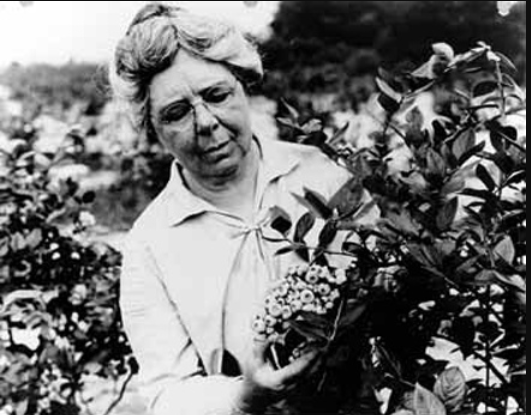
SOIL SCIENCE 101
Despite their local fame, blueberries can be tricky to grow. Blueberries are very particular about their soil conditions, needing much more acidic soil than most other plants!
Soil is not a static thing. It’s made up of many parts that are constantly evolving, dying, reproducing and reacting to one another. Forty to fifty percent of soil is weathered rocks and minerals. Parent rock materials are slowly and continuously eroding, crumbling into smaller and smaller particles. The largest particles we call sand, the medium silt, and the smallest clay. Up to 10% of soil is made up of biological organisms both dead and alive – plants, animals, algae, bacteria, fungi (when these organisms are dead and decomposing we call them organic matter). The roughly last half of soil composition is made of pore space. Pore space is where microorganisms live, where plant roots grow, where air and water pass through and are stored. Without air and water moving through the soil, being stored in the pore space, neither plant roots or microorganisms would be able to survive.
The water held in these pore spaces is called soil solution. Nutrients in the soil need to be dissolved into this soil solution in order for plants to take those nutrients up through their roots. Whether the nutrients are actually able to dissolve into the soil solution is dictated by the pH. You can have plenty of nutrients in the soil, but if the pH is not at the right level, the plant will never be able to access them.
pH stands for “potential of hydrogen,” and refers to the concentration of hydrogen ions in the soil solution on a logarithmic scale of 0 to 14. The higher the concentration of hydrogen ions, the more acidic the soil. To give you a sense of the scale, lemons have a pH of 2.5, water 7, and ammonia 11.1. Most plants in the garden want a pH level around 6.5. If blueberries are grown in this same soil they will have slow, weak growth, yellow leaves and little to no fruit production. Blueberries want a pH of 4.5-5.5.
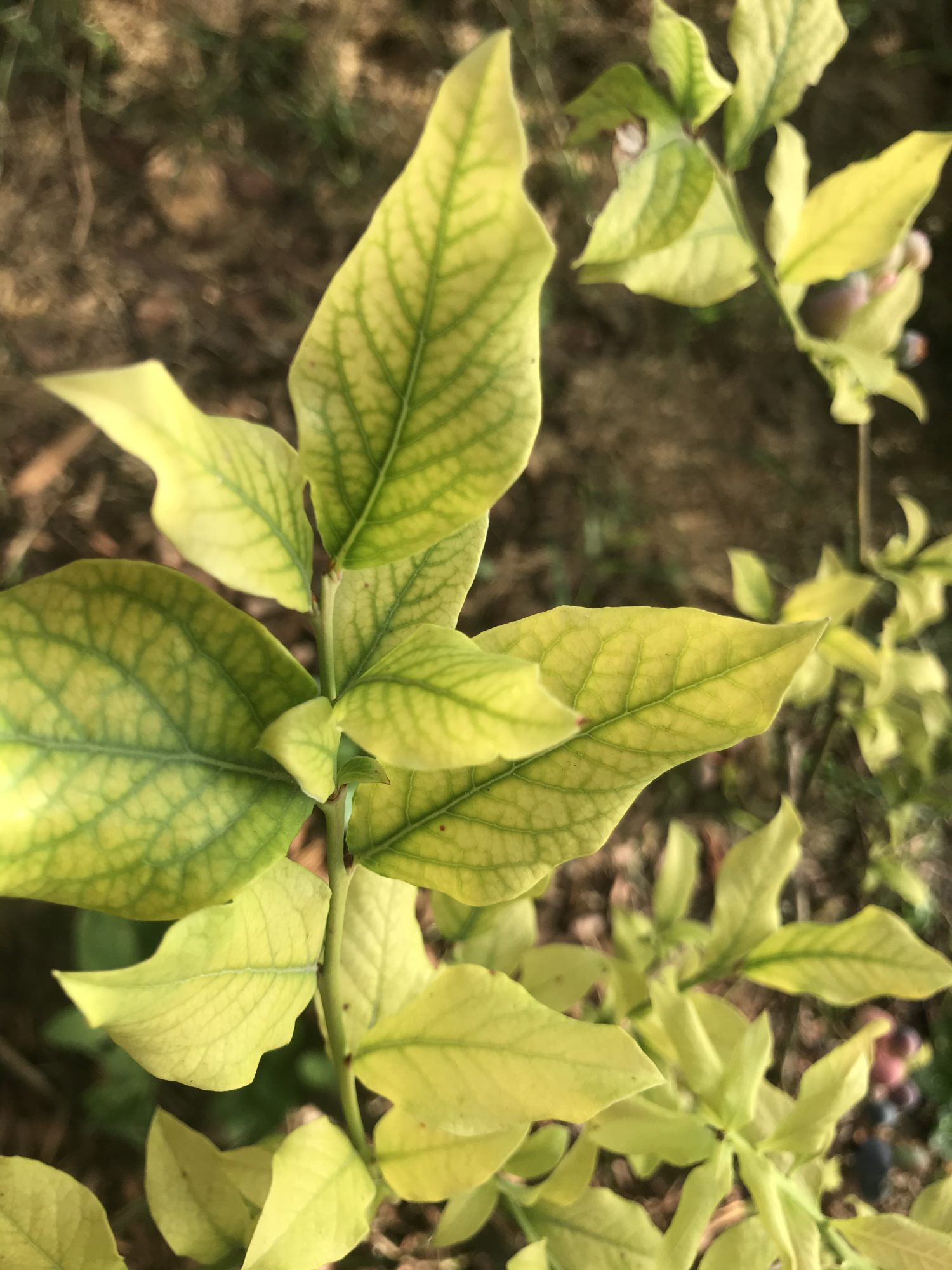
Photo Source: POP.
GETTING THE pH RIGHT
Before Planting.
Most of the native soils in and around Philadelphia have a high clay content and a pH too high for blueberries. Before planting blueberries, you need to take a soil test. There are at home pH test kits, but sending to a lab is always best for the most accurate results. Two great places to send soil samples to are Penn State Ag Extension and UMass Amherst. Details on how to take a soil sample can be found here.
If your pH comes back between 4.5-5.5, congratulations! You’re off to a great start. No need to adjust your pH.
If your soil pH is between 5.5-6.2 you will need to amend your soil. The safest, cheapest, most common way to lower the pH at a larger scale is to add elemental sulfur to the soil. Bacteria in the soil transform the elemental sulfur into sulfuric acid which is what lowers the pH. It is a slow biological process, not a quick chemical reaction – it can take 3-12 months to see results. And since it is a biological process – warmer, wetter environments make for quicker work. Soils should be tested again prior to planting, and if desired pH has not been reached, then planting should be postponed and more elemental sulfur should be applied until target pH of 4.5-5.5 is achieved. At minimum, wait three months between applications of elemental sulfur.
Details on how to apply at the garden scale can be found here. Spread evenly over soil at the rate indicated by the chart. Mix into soil, several inches deep. Water well.
If your native soil’s pH starts with a pH of 6.2 or higher it is recommended that you grow in raised beds or containers. At maturity, the blueberry plant will need a container at least 24” deep and wide. You can either buy a pre-mix soil media made specifically for acid loving plants, or you can make your own custom blend. Make sure the container has good drainage and is well watered. Place in an area that gets full sun, at least 6-8 hours. A place with partial shade in the afternoon is ok.
ACIDIC SOIL MIX RECIPES
The standard soil mix :
- 1 part potting soil
- 1 part peat moss (avoid peat moss whose pH has been balanced!)
However, peat moss is part of a unique ecosystem that took thousands of years to accumulate. We are using peat moss much quicker than it can renew itself and alternatives should be considered!
Sustainable Soil Mix:
- 1 part potting mix
- 1 part coconut coir
- Organic acidifier fertilizer at rate directed by packaging.
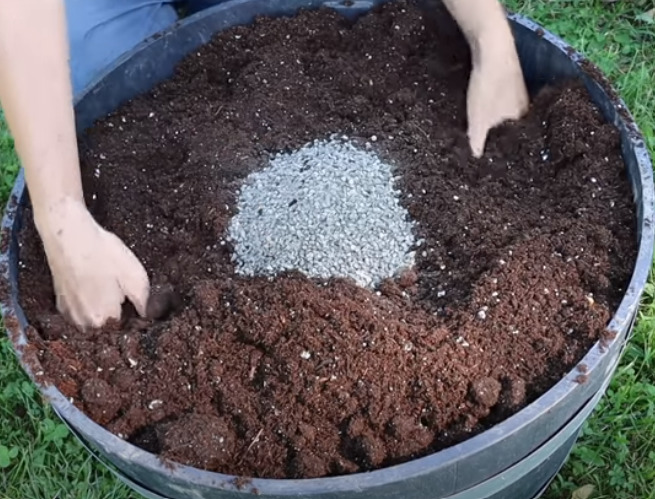
Photo Source: Screenshot from Growfully with Jenna.
BALANCING pH IN ESTABLISHED PLANTS
Signs that your established crop does not have a low enough pH are the yellowing of young growth, with contrasting green veins and weak stunted growth. These symptoms can also be a sign of water stress, so make sure you do a soil sample before amending your soil.
If test results confirm that your soils pH is too high in your established blueberry crop there are several things you can do.
- Apply elemental sulfur at the drip line (the outer edge of canopy/branches) which is where the highest concentration of feeder roots are. Dig at least 4 holes 1’ deep and 4-8” wide around drip line. Mix elemental sulfur with soil and refill holes.
- Apply 1/3 cup (1/6 lb.) elemental sulfur per plant out to drip line. Mix into soil and water well. Costs less than 10 cents per plant/per treatment.
- Use a garden sulfur and apply as directed on package. Look for products that use elemental sulfur as their main active ingredients. Aluminum sulfate and other quick acting agents come at the risk of toxification. Follow directions and rates of applications on the bag. Costs approximately $2.50 per plant/per treatment
- Foliar feed blueberry crops every other week with compost tea during growing season. This will help to provide for nutritional needs of plant until correct pH levels allow for plant to feed from soil.
- Adding oak leaves, pine needles, and spent coffee grounds as mulch around plants is a great way to build organic matter, suppress weeds, and retain soil moisture. These acidic materials may lower pH slightly as materials break down, but should not be counted on independently when pH needs to be lowered.
Photo Source: POP.
OTHER CONSIDERATIONS
Blueberries have shallow hairless roots. This means they need consistent water and compete poorly with weeds. Plants should be receiving 1-1.5” of water per week from rain and/or irrigation. A 3-4” layer of mulch should be applied to maintain soil moisture, suppress weeds and add to soil organic matter content. Sawdust, woodchips, leaf compost, salt hay or clean straw are all good choices. Never add mushroom compost or manures to blueberry crops as these have high pH.
Blueberries are self-fertile, but cross pollination will increase productivity and size of crop. Consider planting two or more cultivars close together. Cultivars have a wide range of harvest windows with the earliest beginning in June and the latest ending in September. Typically each cultivar will produce for 2-4 weeks. Pick a variety of early, mid, and late maturing cultivars to extend the harvest. Blueberries are slow growers. For the first two years after planting, all blossoms should be removed to allow all the plant’s energy to go into growing the structure of the plant. Large harvests can be expected to begin at 3-4 years.
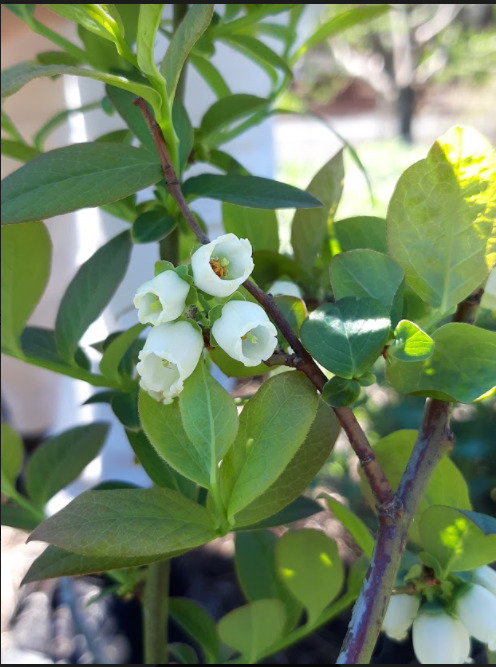
PESTS
Spotted Wing Drosophila (Drosophila suzukii) is a fruit fly from East Asia that entered New York in 2011 and has since spread to the entire country. The spotted wing drosophila (SWD) lays its eggs in fresh fruit with visible damage often not occurring until 3 days after harvest. While not a huge problem in Philadelphia at this point, it can affect up to 80% of the harvest for growers in the surrounding areas. You can make a homemade trap and learn to identify SWD with a hand lens. To prevent and manage SWD, make sure to pruning blueberries in dormant season, harvest frequently and thoroughly (especially overripe fruit), and spray Entrust when necessary. Early ripening varieties are advantageous as the SWD population swells as the season progresses.
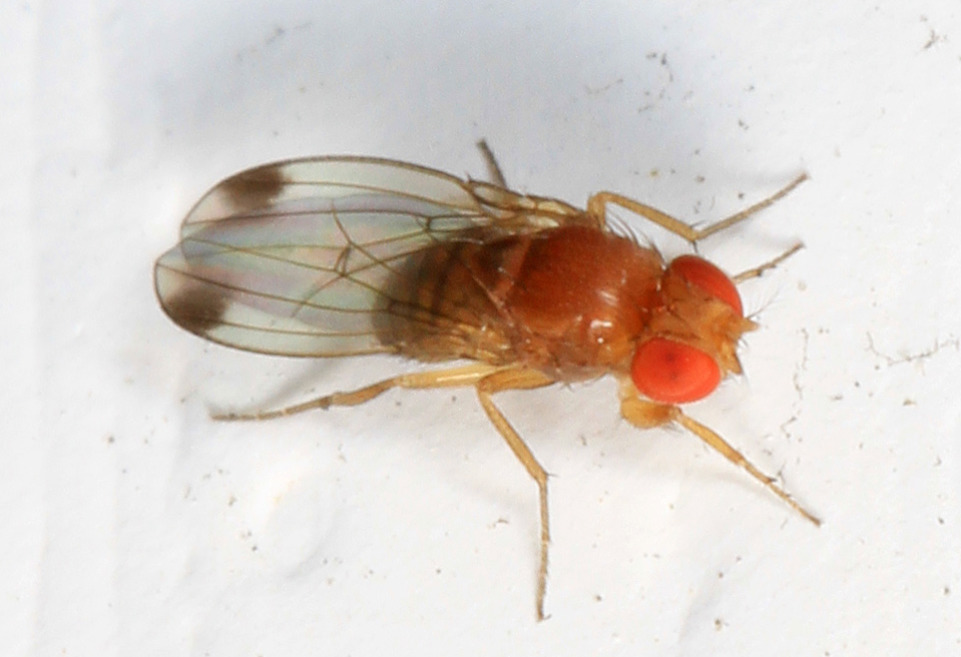
Birds! Birds love blueberries and have been known to eat up to 50% of the harvest. Netting is the #1 way to prevent birds from eating your harvest. Tips and tricks for outwitting the birds can be found here.
PLANTING A NEW BLUEBERRY CROP
- Pick a site with 6-8 hours of sun, and good drainage. They can grow in 4 hours of sun, but fruit production will be reduced.
- Test and amend soil to pH level of 4.5-5.5.
- Spring plantings tend to do better as plants can be heaved out during winter due to weak root systems.
- Plant bushes 3-4’ apart. Add organic matter into the planting hole. Planting several different cultivars close together can increase yield and extend harvest.
ONGOING CARE
- Mulch around plants 3-4” deep. Keep weed free. Oak leaves, pine needles, coffee grounds, saw dust, leaf compost, woodchips, and clean straw are all great mulches!
- Water well. 1-1.5” per week. Do not allow soil to dry out.
- Prune every year in late March when you can clearly see flower buds. It is important to continually renew growth as older clanes produce less and smaller fruit and are more prone to diseases. For a full explanation check out the shrub section of our pruning guide.
- Monitor pH and amend as needed. Always be aware of pH levels of any mulch or compost applied to the area.
POP FAVORITE VARIETIES
Early: Earliblue, Duke, Patriot
Middle: Bluecrop, Blueray
Late: Herbert, Jersey
RECIPES
Blueberry Sapan. Daily staple for Lenni Lenape.
Blueberry Shrub. For some old-time tasty drinking vinegar.
This edition of POP Tips prepared by Education and Outreach Coordinator, Corrie Spellman-Lopez.
SUPPORT US! If you found this entry useful, informative, or inspiring, please consider a donation of any size to help POP in planting and supporting community orchards in Philadelphia: phillyorchards.org/donate.
Resources:
https://extension.psu.edu/highbush-blueberry-production
https://njaes.rutgers.edu/fs419/
https://njaes.rutgers.edu/FS750/
https://fruit.cornell.edu/spottedwing/
https://www.canr.msu.edu/news/soil_test_before_you_plant_blueberries
https://hortnews.extension.iastate.edu/1994/4-6-1994/ph.html
https://www.canr.msu.edu/news/soil_test_before_you_plant_blueberries